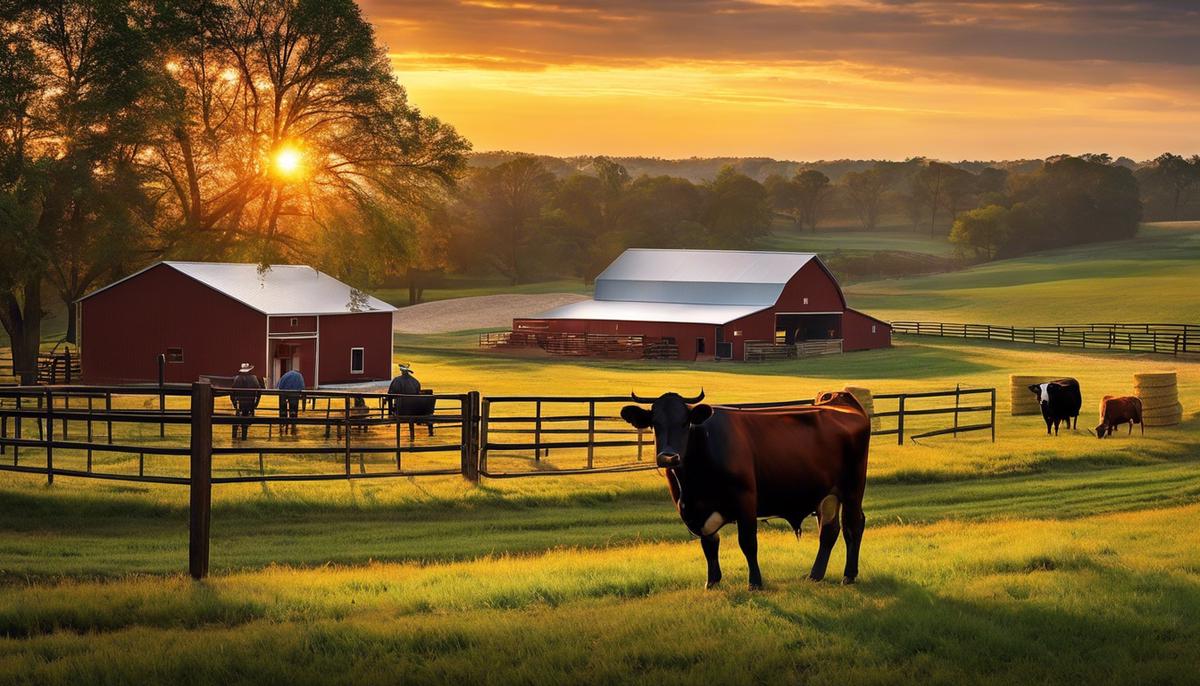

Agridisk
Egypt - Alexandria
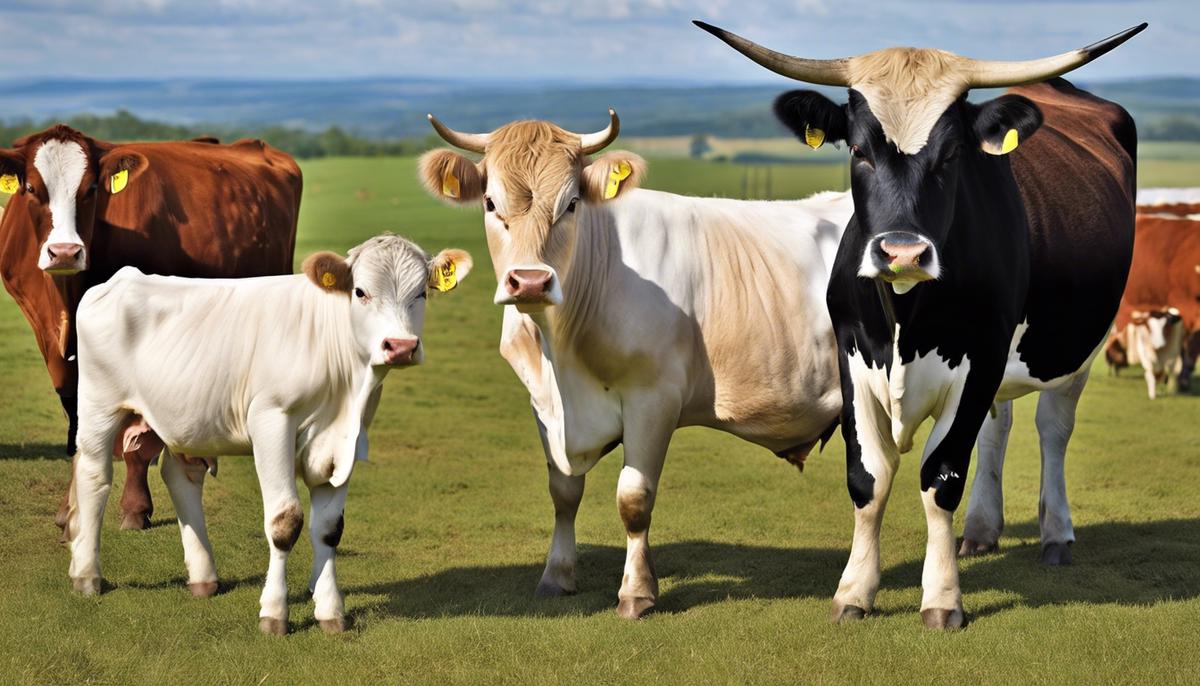
Cattle farming & How to write a business plan for a cattle farm?
Description: it has been intrinsic to human society since days immemorial and has radically shaped the course of our collective history and personal experiences. It is an array of complex practices that go far beyond just rearing cattle; it necessitates understanding the appropriate infrastructure, acknowledging and appreciating the differences in breeds, providing adequate veterinary care, and mastering the art of effectively marketing and selling. This endeavor will uncover the intricate aspects of cattle farming, from the need for proper equipment and infrastructure to the importance of understanding cattle breeds and their nutrition, to experiencing the criticality of health care, all the way to fathoming the dynamics of the cattle market and selling process. Cattle farming, often seen as an extensive commercial venture, can also be pursued with passion and joy as a hobby. As challenging as it may sound, with the right information and guidance, anyone can make the transition from marveling at grazing herds to running their own small-yet-thriving cattle farm. Let's delve into the essential equipment and infrastructure needed to jumpstart your journey as a cattle farming hobbyist. Start by creating a robust and secure barrier around the pasture. Well-maintained fencing prevents cattle from straying and protects them from threats. Traditional barbed wire, wood, or electric fencing are all solid choices, but always take into consideration local regulations and animal welfare guidelines when deciding on the type of fencing. Handling facilities are vital for restraining cattle during certain procedures. They consist of a series of pens, gates, and chutes with a crush or squeeze at the end to safely hold the animal in place for vaccinations, ear tagging, or other medical procedures. For hobbyists with a smaller herd, portable panels and gates can be used to make temporary handling facilities. Good nutrition and hydration are pivotal for cattle health and growth. Feed and water troughs or bunk feeders and automatic waterers are essential to ensure the cattle receives adequate sustenance. Also, consider a feed storage facility to keep feed dry and free from pests. Depending on the local climate, hobbyists may need to provide shelter for their herds. While cattle can withstand diverse weather conditions, shelter helps in extremes of heat and cold. A simple lean-to or three-sided shelter can be sufficient, although barns or sheds offer more comprehensive protection. Practices like vaccination, deworming, and treating illnesses require some essential tools. Thermometers, drenching guns for deworming, syringes and needles for vaccination, and hoof trimmers are all handy tools to have in your arsenal. A tractor, while not strictly necessary, can be a game-changer for hauling feed, cleaning out barns, and maintaining pastures. Moreover, hobbyists might find a manure spreader and a hay baler useful, especially if they plan to grow and harvest their own feed. Think access roads for feed delivery and veterinary visits, a secure place to store medications (a simple lockable cabinet will do), a frost-free hydrant for winter water supply, and perhaps a small office or tack room for paperwork and tool storage. While the list may seem overwhelming initially, remember — every beautiful pasture was once a blank slate. So, dust off the boots, put on work gloves, and step into the rewarding world of cattle farming. The mooing herds and verdant pastures await the hobbyist farmer, along with the unparalleled joy of nurturing and growth. Happy farming! Every cattle enthusiast knows that the pursuit of rearing these majestic beasts involves learning about different breeds and their specific nutritional needs. Having a purpose-oriented approach towards cattle rearing is essential, as each breed thrives under unique dietary requirements. This article aims to shed some light on this exact topic. A fan favorite, the Angus breed, is renowned for its fast growth rate and high-quality beef. Their dietary needs require high-energy feed such as grain, to support their rapid development. However, their nutrition balance must be adequately regulated as overconsumption of grain can lead to digestive issues. Therefore, an Alternating diet of pasture and grain may serve to keep them healthy and efficient. Next in line, the famous Holstein breed, most recognized for dairy production. Over the years, the Holstein breed has been selectively bred for its ability to produce large volumes of milk. Its diet is thus high in energy-providing feed such as silage, hay, and grains rich in carbohydrate content. Moreover, to maintain a high milk yield, these animals require a robust amount of minerals, proteins, and vitamins. Then, we have the versatile Hereford breed, known for its hardiness and adaptability. They can feast on coarse vegetation that other breeds might refuse. In fact, they can thrive on high fiber grass-based diets, significantly lowering feeding costs. Although rugged, Herefords cannot be ignored in providing a balanced diet with the right vitamin and mineral supplements to stave off deficiencies and illnesses. The Charolais breed, known for muscle development and lean meat, requires a rather protein-heavy diet. High-quality forages and protein-rich feeds like soybean meal, cottonseed meal, or alfalfa hay usually make up the majority of their diet. Furthermore, to support their muscle development, the right balance of other nutrients like phosphorus, magnesium, and potassium is determinedly essential. Lastly, the Brahman breed, a heat-tolerant breed, has an incredible ability to convert low-quality forage into body weight, beneficial for ranchers dealing with rugged terrain or poorer quality pasture. However, supplementing their diet with high-quality forages and protein supplementation during dry seasons is recommended to maximize their growth and beef production potential. Understanding your herd's nutritional requirements is pivotal for their productivity, health, and welfare. It's necessary to keep a close eye on their body conditions and make dietary adjustments when required. Consultation from a cattle nutritionist can be invaluable in drafting customized diet plans. Remember, what works excellently for one breed might not be as effective for another. Cattle rearing is an art that requires patience, knowledge, and an enthusiastic spirit to understand and provide what's best for these magnificent creatures. Beyond the above-listed needs, assuring the health of cattle ties in more intricately with preventative and medical care as well as diligent monitoring practices. This involves tactical vaccinations, vigilance against parasites, understanding potential health issues and knowing when to get a vet involved. Vaccinations are fundamental in disease prevention. Each cattle, regardless of breed or use, will require a program that encompasses vaccinations for common diseases. Standardly, this includes Bovine Viral Diarrhea (BVD), Infectious Bovine Rhinotracheitis (IBR), and Bovine Respiratory Syncytial Virus (BRSV). Additional vaccinations might be recommended based on regional diseases or the individual health of the cattle. Parasites can play havoc with the health of any herd, reducing productivity and causing diseases. Implement a deworming program with the guidance of a veterinarian to effectively keep such threats at bay. Be sure to also regularly clean barns, grazing areas, and feeding spaces to minimize parasitic infestations. Close monitoring of cattle for signs of ill health is a must. While many symptoms can be undeniably straightforward, others may be more subtle. Subdued behavior, reduced feed intake, isolated standing posture, unexplained weight loss, and abnormal discharges are all vital indicators. Anxiety and stress also tend to impact the health of cattle, so maintaining a calm barn atmosphere is important. Sensible handling practices during transport and regular care procedures can help keep the stress levels low. Breeding practices also have a strong impact on cattle's health. Regular health examinations of bulls, maintaining appropriate bull to cow ratio, and careful scrutiny of pregnancy and calving records can help ensure the successful reproduction and overall health vitality of the next generation. When it comes to deciding whether a vet must be involved, any situation that appears beyond common understanding or control should suffice. Regular vet visitations are essential even if it's merely for preventative purposes or routine health checks. But if there is an unexplained decrease in milk production, or behavioral abnormalities, or if cattle display symptoms that indicate a prominent sickness - it's best to get the vet involved immediately. Through this, maintaining the health of cattle can ensure their longevity and productivity, and make cattle rearing a more rewarding venture. Careful attention, coupled with preventive measures and a keen eye for detecting potential health risks, are all in a day's work for a cattle hobbyist - because in the end, a healthy herd is a happy herd. Entering the thrilling arena of the cattle market isn't for the faint of heart. It's an electrifying blend of prices, stockmanship, and business savvy, steeped in centuries-long traditions yet continuously evolving. It draws from every corner of a cattle keeper's knowledge and pushes the boundaries of managing a successful herd. The cattle market dances to its own rhythm, influenced by supply, demand, and external factors such as weather and trade policies. It's a big player in the agricultural sector, painting economic landscapes whole states wide. Staying abreast of these market fluctuations is crucial; news outlets, livestock market reports, commodities prices, and professional associations can all lend valuable insights into the current cattle market conditions. Real success in the cattle market is built on strong relationships. Approaching potential buyers or commission firms confidently with a robust understanding of your herd's qualities and their suitability to different market segments can turn one-off sales into long-term buying partnerships. Try joining local cattle associations, networking in industry events, or signing up for online livestock forums to meet and learn from like-minded cattle enthusiasts. No two cattle are perfectly alike, and certainly, no two herds. Showcasing your cattle's unique qualities can give you an edge in the competitive cattle market. All that knowledge of diverse breeds and painstaking nutrition management should shine through each animal's excellent body condition, overall health, and productivity. Optimal cattle care reflects in the herd's collective vitality, which can differentiate your cattle and hook potential buyers' attention. Adapting good marketing practices can give you a leg up in selling cattle. Set clear, realistic prices based on your herd's quality and the current market—neither dramatically low nor absurdly high. Offering complete, verifiable records of your cattle's health management, pedigrees, and performance can vouch for your credibility to buyers. Above all, presenting your cattle attractively—think clean, well-groomed and stress-free—can leave a lasting impression on buyers. Auction markets can offer a simple, streamlined approach to cattle selling, especially for relative newcomers. It brings together sellers, buyers, and industry professionals under one roof, forming a lively, competitive bidding environment. Clear guidance on what to expect at an auction— weigh-in processes, commission charges, and payment policies—can ease much of the logistics for a beginner. Compliance with all regulations surrounding livestock sales is paramount. From registering your herd, adhering to transportation rules, to fulfilling health tests and vaccinations—every legal requirement should be rigorously met to avoid penalties and disruptions in your cattle selling process. Navigating the cattle market may seem complex; however, armed with knowledge, networking, and optimal care of your herd, maneuvering this market becomes far more approachable. And finally, remember to rejoice in those small victories, the sign of a successful sale, a satisfied buyer, or a thriving herd because, at its heart, cattle rearing remains a labor of love. The delightful complexities and challenges of cattle farming are manifold, yet with the right knowledge and a dedicated farmer, it can be an incredibly rewarding endeavor. A deep dive into topics like infrastructure, understanding of various breeds, health care, and finally, the very art of selling provides the hobbyist or any prospective cattle farmer with the necessary tools for success. The aim is to foster a marriage of love and science, passion and practical skills, and ultimately contribute towards a sustainable and profitable cattle farming industry. The intricacies of cattle farming are indeed vast, but armed with this information, the journey becomes less daunting and more achievable. The journey to launching a successful cattle farm traverses a landscape of meticulous planning and decisive strategy. At the heart of this venture is a document that not only outlines the operational blueprint but also anticipates the ebbs and flows of the agricultural marketplace—the business plan. Fostering a thriving cattle operation requires more than just pastures and livestock; it demands a foundation constructed upon a well-articulated executive summary and robust objectives. This esssay embarks on the essential first step, setting the stage for aspiring cattle ranchers to encapsulate their farm's mission, articulate a vision with precision, and define the core objectives with clarity, all while laying out a comprehensive strategy that serves as the North Star for their agribusiness pursuit. Envision a cattle farm that not only thrives on the traditions of livestock rearing but embraces the cutting-edge of agribusiness. Today’s cattle farm vision is not just about maintaining an operation but about reinventing it—leveraging in-depth industry insights to secure a future that is sustainable, profitable, and socially responsible. In conclusion, transform the traditional cattle farm into a beacon of modern agriculture—one that boldly takes the helm in innovation, sustainability, and efficiency. Let this multi-dimensional approach to cattle farming be the blueprint for an enterprise that not just survives, but thrives in the dynamic landscape of today’s agribusiness sector. In the spirited conquest of the cattle farming market, thorough analysis followed by strategic penetration is essential. To genuinely excel and not just survive, one must go beyond sustainability and animal welfare – now prerequisites rather than differentiators – and adopt a holistic approach to identifying opportunities and streamlining entry. A nuanced understanding of consumer trends shapes effectively tailored offerings. As customers become increasingly health-conscious, a demand for organic and grass-fed beef arises. Catering to this niche is more than just a marketing ploy—it’s responding to a clarion call of today’s market demands. Engage directly with consumers to get actionable insights, leveraging social media analytics and surveys. Keep a pulse on the regulatory environment. Policies concerning food safety, import-export restrictions, and environmental codes can significantly impact market strategy. Proactive compliance coupled with advocacy can lead to an advantageous market position, while uninformed decisions can culminate in costly setbacks. Seamless supply chain logistics is another vital element. Prioritize the development of partnerships with local suppliers to reduce costs and carbon footprint. Implement cutting-edge tracking systems to ensure product integrity and impress upon clients the reliability of your supply. Position your brand so it resonates with the target demographic. Craft a story that transcends the product, underscoring values such as tradition, quality, and innovation. Utilize multichannel marketing, combining traditional advertising with digital platforms, to stay top-of-mind for consumers who are bombarded with infinite choices. When penetrating a new market or expanding within an existing one, conduct a competitive analysis to identify gaps ripe for exploitation. Develop a phased approach to entry, starting with pilot programs to test the waters before a full-scale launch. Flexibility is key; being prepared to pivot when something isn’t working is not an option, it’s a necessity. Analyze cost structures meticulously to ensure that the foray into the cattle farming market isn't just a revenue-generating venture but also a profitable one. Economies of scale can be achieved by investing in technology that offers efficiency in breeding, feeding, and herd management. The target is not just to join the market but to revolutionize it. In essence, analyzing and penetrating the cattle farming market demands an entrepreneurial alchemy of market insight, innovative thinking, and a tactical approach. By observing these guiding principles, one can adeptly sidestep common pitfalls and pave the path to becoming an influential player in the dynamic landscape of cattle farming. Commencing a cattle farm presents a robust business opportunity, yet it requires financial preparedness and strategic foresight to ensure both short-term liquidity and long-term profitability. Understanding the capital requirements—not just at startup but for ongoing maintenance—is crucial to transform this venture from a mere concept to a thriving, sustainable operation. Startup Costs: Charting your fiscal pathway kicks off with a meticulous tally of startup costs. Land acquisition stands as the central pillar, demanding the largest capital infusion. Acquiring fertile grazing land with sustainable water resources—or, when required, the infrastructure for water delivery systems—is key. Following the land comes the livestock. Initial livestock investment is sizeable—purchase price varies with breed, age, and lineage. Don't forget equipment: fencing, feeding, and handling equipment all peg onto your startup invoice. Machinery such as tractors, trucks, and trailers must also be factored in. Add to this the cost of building or refurbishing barns and sheds to provide safe, humane shelter for your animals. Grazing enhancements, including seeding and fertilizing pastures, warrant financial consideration too. And make no mistake—the price tag of licenses, permits, and insurance will also tap your reserves from the outset. Running Costs: After takeoff, steer your financial focus towards the dynamics of daily operation. Feed represents a recurring expense with seasonal fluctuations—smart investors hedge against market volatility. Health management, including vaccinations and veterinary care, also requires a regular outlay. Labor costs are pivotal if you’re not going it alone; skilled ranch hands are worth their weight in gold—and their salaries reflect that. Maintenance of buildings, equipment, and fencing is an ongoing responsibility that can cause financial grief if neglected. Expect the unexpected—set aside a contingency fund for emergencies, such as disease outbreaks or severe weather impacts. Utility costs are omnipresent and at the mercy of rates and consumption—efficient energy use is not just eco-friendly but economically wise. Remember, a foresighted approach includes budgeting for growth and reinvestment. Genetically enhanced breeding stock, advanced machinery, and expanded acreage are potential avenues for scaling up your enterprise. Allocate funds for these prospects to escape the trappings of a stagnant operation. Take stock of government grants and subsidies designed to support the agricultural sector. These can offer significant financial relief and are not to be overlooked. Also, consider modern financial tools and services that specialize in agricultural endeavors, such as flexible loans and farming-specific financial advice. In securing the financial health of your cattle farm, an analytical mindset is as much an asset as capital itself. Navigate the fiscal waters with precision, and lay the foundation of an agricultural legacy that stands the test of time and market tides. Therein lies the art and science of a successful cattle farming enterprise. With the rolling pastures coming into focus as the final page of our business plan turns, the grasp on a future rich with agricultural success tightens. The culmination of an efficacious business plan is not merely a document—it’s a testament to the rigors of strategic planning and financial acumen. Through a diligent analysis of the market, calculated operational forecasting, and prudent financial planning, an illuminating path forward for the cattle farm emerges. Empowered by knowledge and an unyielding commitment to the vision set forth, the aspiring cattle rancher is now equipped to transform the blueprint of this plan into a tangible and flourishing reality, thereby contributing to the fabric of the agricultural industry with sustainability at its core.Cattle farming & How to write a business plan for a cattle farm?
Cattle farming
Equipment & Infrastructure for Cattle Farming
Cattle Farming 101: Essential Equipment and Infrastructure for Hobbyists
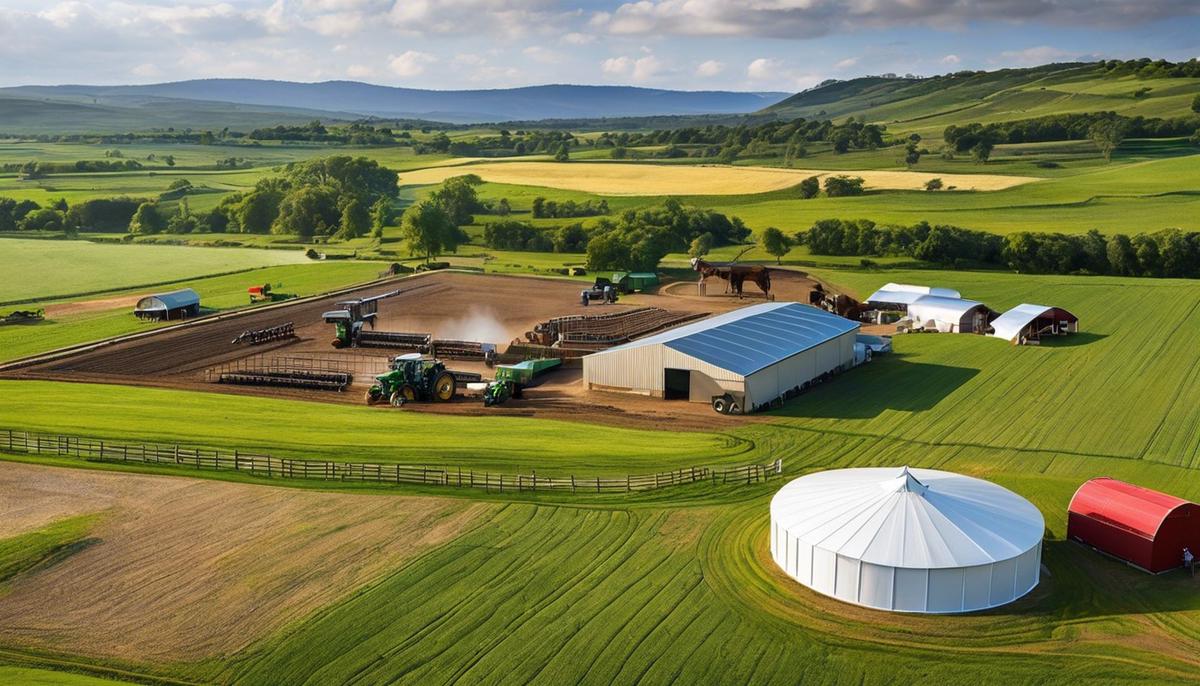
Cattle Breeds & Nutrition
Diverse Cattle Breeds and their Unique Nutritional Requirements
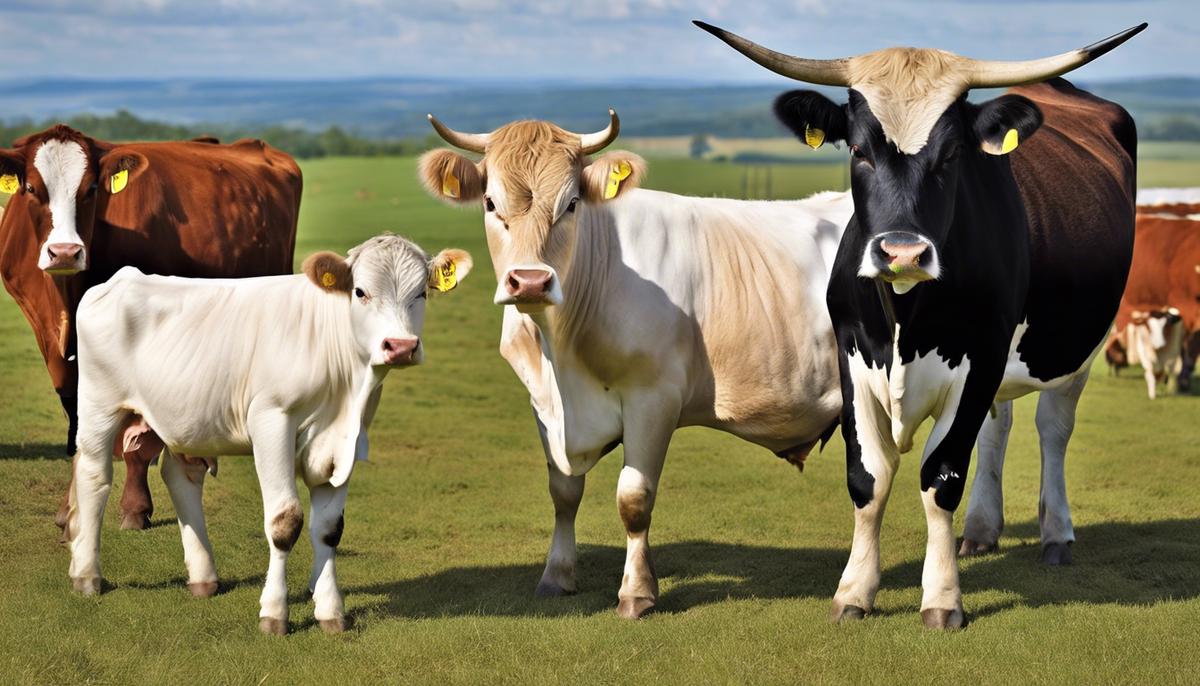
Cattle Health & Vet Care

Cattle Market & Selling Process
Understanding the Current Market
Building Buyer Relations
Expert Stockmanship
Marketing Practices
Involving Auction Markets
Legal Requirements

How to write a business plan for a cattle farm?
Executive Summary & Objectives
Harnessing Innovation on the Modern Cattle Farm: Cultivating Prosperity with Purpose and Precision
Core Objectives to Galvanize Growth:

Market Analysis & Strategy
Mastering the Cattle Farming Market: A Blueprint for Savvy Entrepreneurs
Consumer Trends and Preferences
Regulatory Landscape
Supply Chain Logistics
Brand Positioning and Marketing
Market Entry and Expansion Strategy
Profitability and Scalability
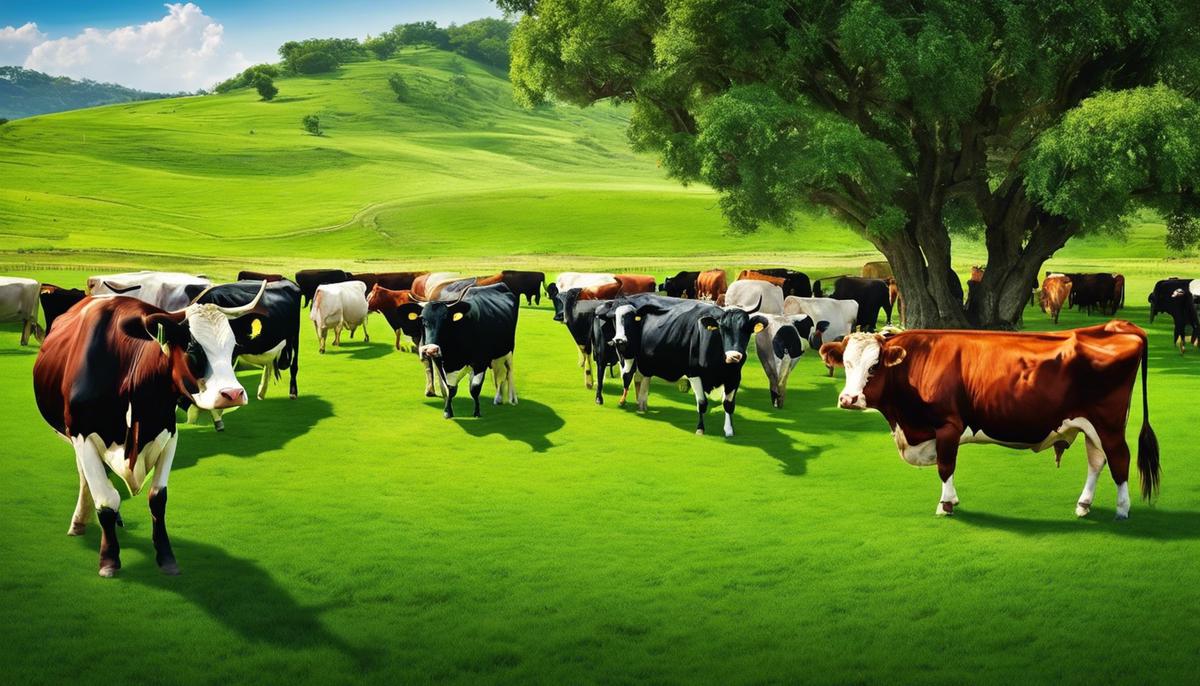
Financial Projections & Funding
Breaking Ground: Financial Essentials for Your Cattle Farm Operation
